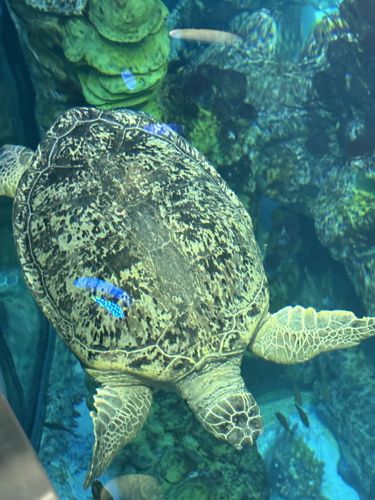Green Sea Turtle
Scientific Name: Chelonia mydas
Order & Family: Order: Testudines, Family: Cheloniidae
Size: Carapace length typically 3 to 4 feet (90 to 120 cm); Weight 300 to 400 pounds (136 to 181 kg), with some individuals reaching up to 700 pounds (318 kg).

Natural Habitat
Tropical and subtropical oceans worldwide. They inhabit coastal areas, bays, and protected lagoons rich in seagrass beds and algae. Females come ashore on sandy beaches to nest.
Diet & Feeding
Adult green sea turtles are primarily herbivorous, feeding on seagrasses and algae. Juveniles are more omnivorous, consuming invertebrates like crabs, jellyfish, and sponges.
Behavior Patterns
Green sea turtles are migratory animals, often traveling vast distances between feeding grounds and nesting beaches. They are generally solitary in the water, but can aggregate at foraging sites. Females return to the same nesting beaches where they were born to lay eggs, typically every 2-5 years. They are excellent swimmers and can hold their breath for several hours, but must surface to breathe air. Juveniles are more carnivorous, gradually shifting to a herbivorous diet as they mature.
Risks & Benefits
Potential risks to humans are minimal, generally limited to accidental encounters during diving or swimming where the turtle might feel threatened. However, it's illegal and harmful to touch or disturb them. From an ecological perspective, green sea turtles play a crucial role in maintaining healthy seagrass beds by grazing, which increases the productivity and nutrient content of the beds. They also contribute to nutrient recycling in coastal ecosystems. Unfortunately, they face significant threats from habitat loss, poaching, entanglement in fishing gear, and climate change, making them an endangered species.
Identified on: 9/4/2025